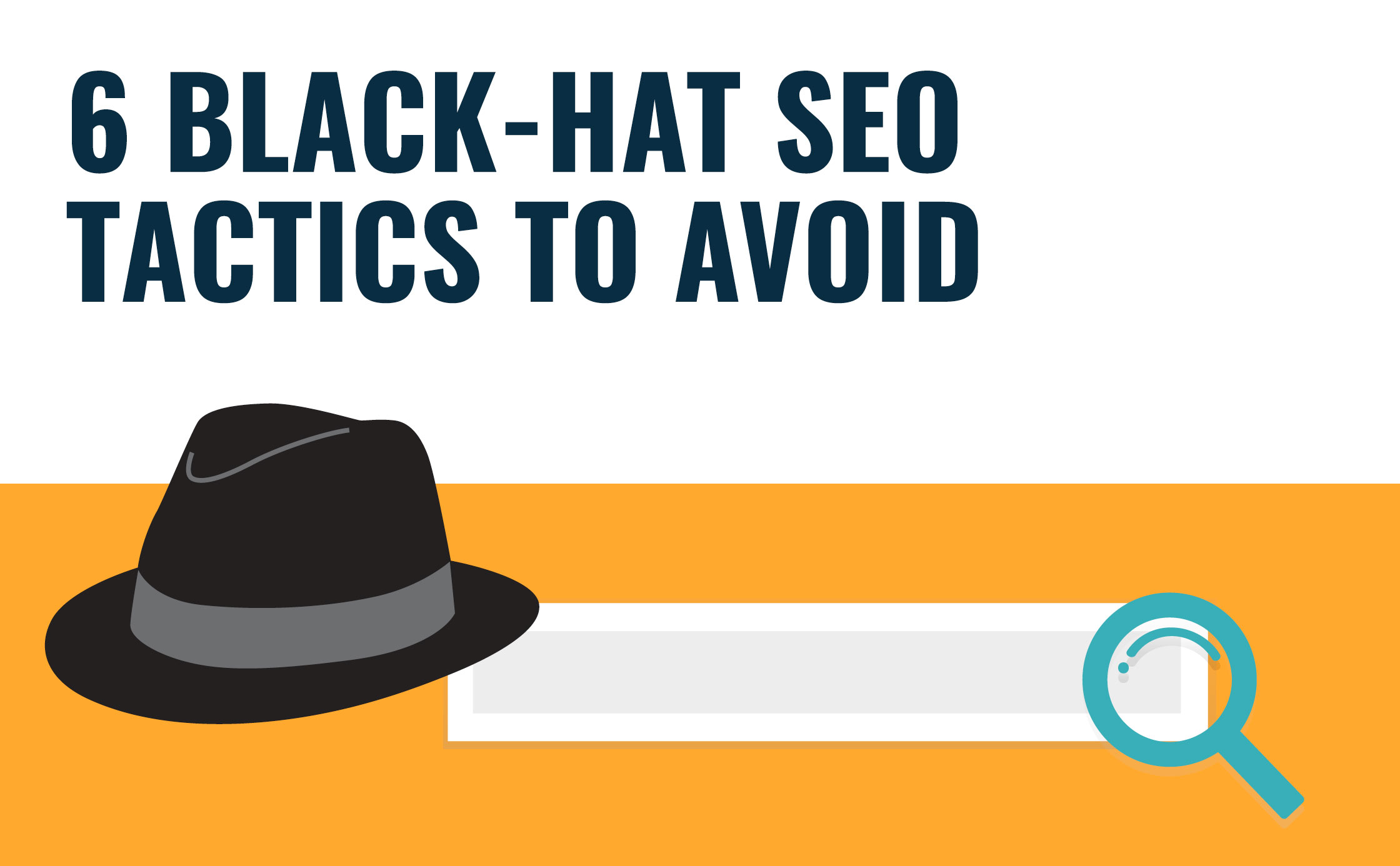
Seeing your website at the top of the first search engine results page (SERP) is an accomplishment for any business. We all want that page-one ranking, but there are right ways and wrong ways to get there.
Since its launch, Google has had to regularly update its algorithm to combat the sneaky “tricks” webmasters have come up with to get their sites to rank higher on SERPs. In the early days of Google, webmasters discovered that if they stuffed a ridiculous number of keywords into their content, they could get their site to rank higher. Or, if they left comments on blog sites that linked back to their site, it would help build their site’s backlink profile, thus increasing their site’s authority.
Since then, Google’s algorithm has become more complex, making it harder for site owners to manipulate search results in order to achieve higher rankings.
What Is Black-Hat SEO?
Black-hat SEO consists of techniques used to manipulate search engines in order to increase a page’s ranking in SERPs. These tactics go against Google’s terms of service and can put your site at risk of being penalized.
What Is a Google Penalty?
There are two kinds of Google penalties: algorithmic and manual.
Algorithmic penalties are the result of algorithm updates that change the design of how websites are ranked.
Manual penalties are directly handed out by a Google employee when Google’s terms of service are violated. If you receive a Google penalty, your site’s ranking performance will either be downgraded or, in some cases, your site will be removed from the search engine completely. While Google does not permanently deindex sites, building your site’s rankings back to where they were will take a long time and a lot of effort.
Black-Hat SEO Tactics to Avoid
1. Keyword Stuffing
Keyword stuffing involves adding an unnecessary number of keywords to your site’s content in order to get your site to rank for those keywords. While this was a very effective tactic early on in Google’s career, a 2003 update rendered keyword stuffing useless. Having a list of keywords out of context on your site or repeating the same keywords excessively throughout your content creates a poor user experience. Instead, Google suggests focusing on creating useful and information-rich content with appropriate use of keywords that still reads naturally to users.
2. Hidden Keywords
Another technique used in the early days of Google was adding keyword mentions to your site that could not be seen by the user. Site developers were able to do this by blending text into the background of the site, placing text behind images, or setting the font size to 0. While this doesn’t impact user experience, Google has labeled this practice ‘deceptive’ and worthy of being penalized.
3. Content Cloaking
Cloaking is a technique where users are provided with content that is different from the content you present to search engine crawlers. Webmasters use this technique to make search engine crawlers think the content on the page is different from what it actually is. For example, a webmaster may build an HTML code for crawlers with useful information about a random topic, but when a user visits their site, they are presented with something completely different and unrelated. Using hidden text is one example of content cloaking.
4. Sneaky Redirects
Similar to cloaking, sneaky redirects are redirects that send users to a different URL than the one being crawled and indexed. Usually, the search engine crawler will index the original page, while users are redirected to a different URL with content unrelated to what they originally searched for. Webmasters will also redirect high-authority pages to low-quality, irrelevant pages in order to boost those pages’ positions in SERPs. While redirects can be helpful and keep your site organized, they should not be used as a tool to manipulate search engine crawlers.
5. Buying Backlinks
It’s no secret that having a strong backlink profile has invaluable benefits for your site. It’s true that you want to try to get as many external links as possible to your site; however, when it comes to SEO, quality trumps quantity. More often than not, an attempt to buy backlinks will fill your backlink profile with low-quality links, making it easy for Google to figure out what’s going on and penalize your site.
6. Comment Spamming
Comment spamming is the attempt to generate links to your site by leaving comments on blogs (relevant or irrelevant to your business) that link back to your site. This practice will not help your rankings, as Google has updated its algorithm to discount links that come from blog comments.
Start Ranking Higher on SERPs Organically
With SEO becoming a powerful tool to increase organic traffic to your business’s site, it may be tempting to look for shortcuts. Even if you do see short-term success from these black-hat tactics, becoming a victim of a Google Penalty can have devastating effects on your site’s rankings and traffic that will take a long time to recover from.
Keep your site safe by practicing ethical SEO techniques and following Google’s webmaster guidelines. If you want a professional SEO analyst to handle the work for you and make sure your rankings improve organically, fill out the form below. We’ll be in touch to tell you more about how we can help you get more traffic to your business’s website!

About the Author | Jaycee Jacobs
Jaycee is an SEO analyst at Townsquare Interactive. She graduated in 2018 from the University of West Florida with a degree in psychology. When she is not helping small businesses grow their online presence, she enjoys breaking out into song (mostly Queen songs) and watching horror movies.
